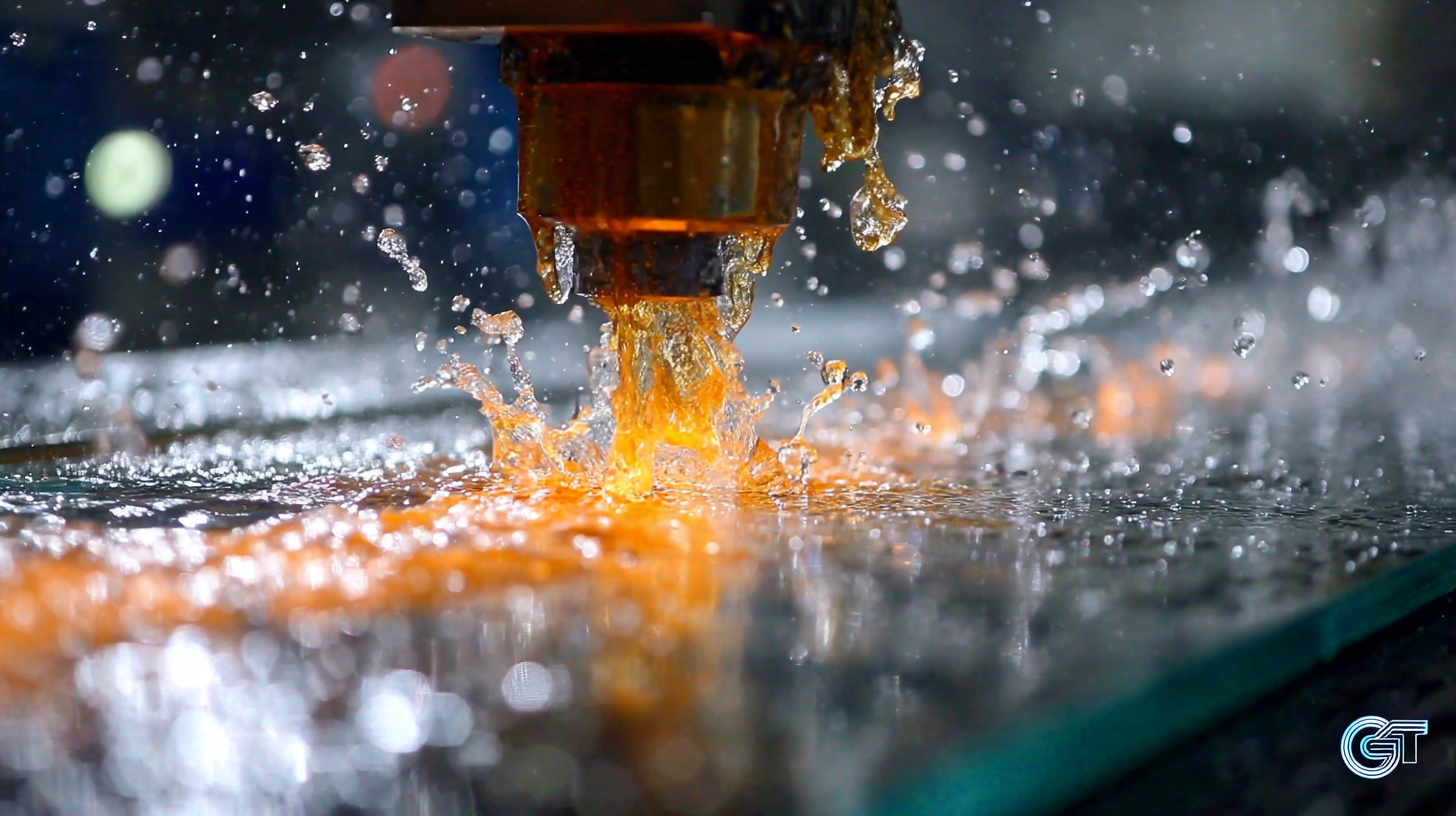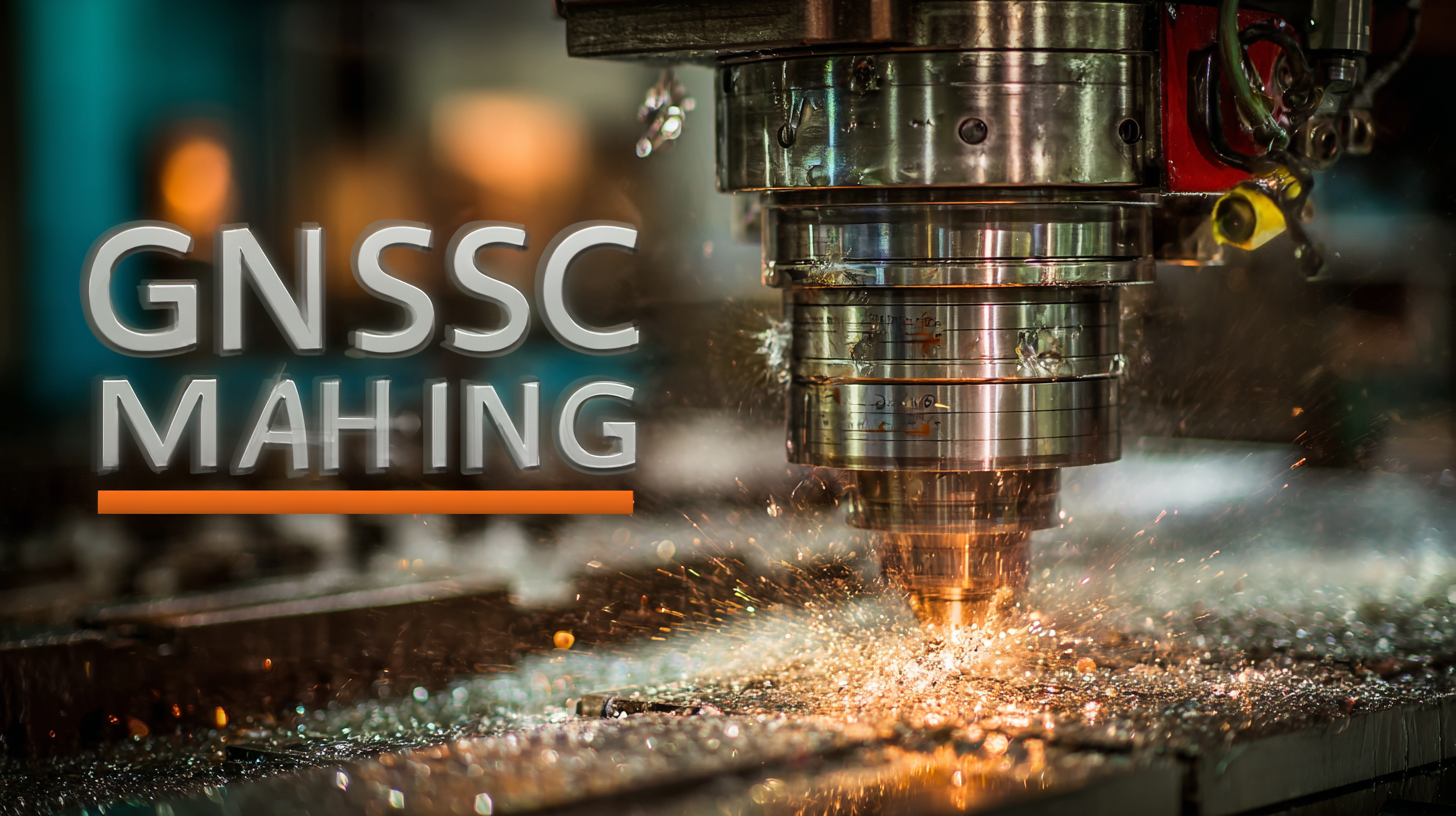Solutions for Innovative Techniques in Glass Processing with the Best CNC Machines
In the rapidly evolving landscape of manufacturing, the integration of advanced technologies in glass processing has become a focal point for achieving precision and efficiency. According to a report by MarketsandMarkets, the global glass processing market is projected to reach USD 29.3 billion by 2025, driven by innovations in machining techniques and machinery. Central to this progression is the adoption of CNC machines, which have revolutionized the way glass is shaped, cut, and finished. The capability of "CNC Machine Glass Processing" not only enhances accuracy but also significantly reduces waste, thereby contributing to increased sustainability. As industries seek to meet the rising demand for high-quality glass products, exploring innovative techniques and the best CNC machines will be pivotal in maintaining competitive advantage and meeting customer expectations. This ultimate guide aims to provide insights and solutions to harness the power of CNC technology in transforming glass processing operations.

Choosing the Right Manufacturer for CNC Glass Processing Machines
When selecting a manufacturer for CNC glass processing machines, it's crucial to consider a few key aspects. First, evaluate the manufacturer's experience in the industry. A company with a proven track record will likely understand the unique challenges of glass processing and provide machines that meet your specific needs. Research their portfolio and client testimonials to gauge reliability and performance.
**Tips**: Always ask about the level of support and training provided with the machine. A reliable manufacturer should offer comprehensive training programs to ensure your team can operate the equipment efficiently. Additionally, consider the availability of replacement parts and service capabilities to minimize downtime in production.
Another factor to consider is the technology and features of the machines. Look for manufacturers who incorporate the latest innovations in CNC technology, such as advanced software interfaces and precision cutting tools. This not only enhances productivity but also ensures lower waste and higher quality finishes on the glass.
**Tips**: When comparing different manufacturers, don’t hesitate to request demonstrations or trial periods. This hands-on experience can give you a better understanding of the machine’s capabilities and how it fits within your production workflow.
Performance of CNC Machines in Glass Processing
Key Features to Look for in Quality CNC Machines for Glass Processing
When selecting CNC machines for glass processing, understanding the key features that enhance efficiency and precision is paramount. A recent report from MarketsandMarkets indicates that the global CNC machine market is projected to reach $100 billion by 2025, emphasizing the increasing importance of technology in manufacturing processes, including glass fabrication. Essential features to consider include the machine's precision capabilities, which is typically measured in microns. A high-precision CNC machine can achieve tolerances as tight as ±0.01 mm, crucial for intricate glass designs.
Moreover, the type of tooling and software integration plays a significant role in optimizing glass processing. Advanced CNC machines now come equipped with specialized diamond tools, enabling them to cut, shape, and drill glass materials efficiently. According to a study by Technavio, machines with enhanced automation and software assist in reducing production time by up to 20%, significantly impacting overall productivity. Additionally, look for machines designed for user-friendly operation, which can minimize the learning curve and improve overall workflow in glass processing environments.
Innovative Techniques in Glass Processing: What CNC Machines Can Do
 In the rapidly evolving world of glass processing, CNC machines have emerged as a game-changer, allowing for unprecedented precision and innovation. These sophisticated tools are not just for traditional cutting; they can perform intricate carving, engraving, and even complex shaping of glass materials. With the ability to automate processes, CNC machines enhance productivity while ensuring uniformity across all products. This technological leap empowers manufacturers to push the boundaries of design, creating pieces that were once deemed impossible.
In the rapidly evolving world of glass processing, CNC machines have emerged as a game-changer, allowing for unprecedented precision and innovation. These sophisticated tools are not just for traditional cutting; they can perform intricate carving, engraving, and even complex shaping of glass materials. With the ability to automate processes, CNC machines enhance productivity while ensuring uniformity across all products. This technological leap empowers manufacturers to push the boundaries of design, creating pieces that were once deemed impossible.
Moreover, the versatility of CNC machines in glass processing extends beyond mere functionality. They are equipped to handle various glass types, from tempered and laminated to dichroic and frosted, opening new avenues for creativity. Advanced software integration allows artisans to visualize their designs digitally before actual production, reducing errors and waste. Whether it’s for architectural elements, decorative items, or custom installations, innovative CNC techniques are redefining the landscape of glass craftsmanship and paving the way for future innovations in the industry.
Ensuring Precision and Efficiency: Maintenance Tips for CNC Machines
In the competitive landscape of glass processing, maintaining CNC machines is paramount to ensuring precision and efficiency. Regular maintenance not only prolongs the lifespan of these machines but also enhances their accuracy, crucial for high-stakes applications. According to industry reports, companies employing rigorous maintenance protocols can increase machine uptime by up to 30%, which significantly impacts overall productivity and operational costs.

Advanced technologies such as integrated force sensors and real-time motion feedback systems are reshaping the maintenance landscape. These innovations allow for predictive maintenance, where potential issues are identified before they escalate, thereby minimizing downtime. Research highlights that the adoption of such technologies can lead to a substantial reduction in maintenance costs, estimated at around 20%, while simultaneously elevating precision in machining operations. As businesses continue to embrace automation, the integration of these cutting-edge solutions will be vital for enhancing machining accuracy and operational efficiency.
Future Trends in Glass Processing Technology and CNC Innovation
The glass processing industry is on the brink of a technological revolution, driven by advancements in CNC (Computer Numerical Control) machines. As reported by the Glass Association, the global CNC machining market is expected to reach $12 billion by 2025, underscoring the growing demand for efficiency and precision in glass fabrication. Future trends suggest a significant shift towards automation and smart technology, enabling manufacturers to optimize their processes while reducing waste. Technologies such as IoT and AI integration are anticipated to enhance predictive maintenance, leading to minimized downtime and maximized productivity.
Tip: When selecting CNC machines for glass processing, consider those that offer built-in sensors and analytics capabilities. These features can provide real-time data on equipment performance, contributing to improved operational efficiency.
Moreover, the rise of advanced materials and custom glass design trends necessitates more complex processing techniques. As noted in a recent report by Technavio, the emphasis on lightweight and high-strength materials is prompting CNC technology to innovate constantly. Companies that invest in R&D to refine their CNC systems will likely lead the market, capitalizing on the increasing consumer demand for tailored glass products.
Tip: Adopt a modular approach to CNC machine systems, allowing for adaptive upgrades as technology evolves. This can ensure your operations stay ahead of competition and meet future processing challenges effectively.

Home
About Us
Products
UPVC PVC Window Machine
Aluminum Window Machine
Glass Cutting Machine
Glass Edging Machine
Insulating Glass Machine
Glass lifting machine
Glass Washing Machine
Glass Laminating Machine
Glass Sandblasting Machine
Glass Drilling Machine
CNC Glass Working Center
CNC Non-Metal Cutting Machine
The Other Glass Machinery
Application
Download
News
Contact Us

 In the rapidly evolving world of glass processing, CNC machines have emerged as a game-changer, allowing for unprecedented precision and innovation. These sophisticated tools are not just for traditional cutting; they can perform intricate carving, engraving, and even complex shaping of glass materials. With the ability to automate processes, CNC machines enhance productivity while ensuring uniformity across all products. This technological leap empowers manufacturers to push the boundaries of design, creating pieces that were once deemed impossible.
In the rapidly evolving world of glass processing, CNC machines have emerged as a game-changer, allowing for unprecedented precision and innovation. These sophisticated tools are not just for traditional cutting; they can perform intricate carving, engraving, and even complex shaping of glass materials. With the ability to automate processes, CNC machines enhance productivity while ensuring uniformity across all products. This technological leap empowers manufacturers to push the boundaries of design, creating pieces that were once deemed impossible.